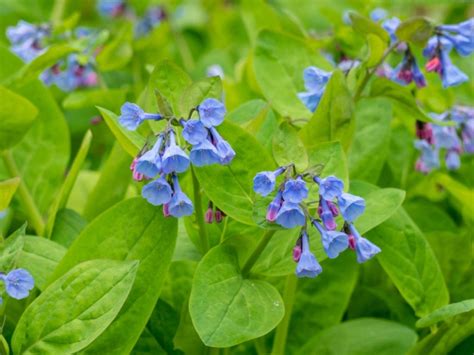How To Grow And Care For A Bluebell Plant
Bluebell Flowers: A Delightful Addition to Your Garden Are you looking for a plant that can add charm and elegance to your garden? Look no further than the beautiful bluebell flower. These stunning flowers are native to England and Spain, and are known for their vibrant blue and purple hues. Plant Attributes Bluebell flowers, also known as Endymion non-scriptus, are perennials that grow best in full or partial shade. These flowers typically prefer a well-drained soil that is neutral to acidic in pH. Bluebells typically bloom in the spring, with the peak of their flowering season occurring in April and May. Plant Care Growing bluebell flowers is relatively easy and straightforward. These plants require minimal maintenance, and are generally resilient to common pests and diseases. To keep them thriving, make sure to water them regularly, especially during dry spells. Additionally, you may want to add a layer of organic mulch around the base of the plant to help retain moisture and keep weeds at bay. Pruning To keep your bluebell flowers looking their best, you may want to consider pruning them on occasion. Deadheading spent blooms can help encourage continued growth and blooming, while also keeping the plant looking neat and tidy. Propagation If you are interested in propagating bluebell flowers, you have a few options. One common method is to divide the bulbs of mature plants and replant them in other areas of your garden. Alternatively, you can also sow fresh seeds in the fall to help ensure a healthy crop of blooms the following spring. Potting & Repotting While bluebell flowers can certainly be grown in pots or containers, it is important to note that they typically prefer to be planted directly in the ground. If you do choose to grow them in pots or containers, be sure to use a high-quality potting soil that is rich in organic matter, and be sure to water them regularly. Common Pests & Plant Disease Bluebell flowers are generally not prone to significant pest or disease issues. However, they can occasionally fall prey to slugs or snails, which may damage the leaves or buds of the plant. To keep these pests at bay, consider using an organic slug bait or creating a physical barrier around the base of the plant. Common Problems One common issue that some gardeners may encounter when growing bluebell flowers is overcrowding. If left unchecked, bluebells can multiply quickly and start to choke each other out, resulting in stunted growth or fewer blooms. To prevent this, consider thinning out your bluebell patch on occasion to allow for adequate space between plants. In conclusion, bluebell flowers are a gorgeous and versatile addition to any garden. Whether you are looking to add a splash of color to a shady corner, or simply want a low-maintenance plant that is easy to care for, bluebells are an excellent choice. So why not give them a try and see for yourself just how beautiful and charming these lovely flowers can be? 


www.gardeningknowhow.com
gardenerspath.com
www.gardeningknowhow.com




Post a Comment for "How To Grow And Care For A Bluebell Plant"